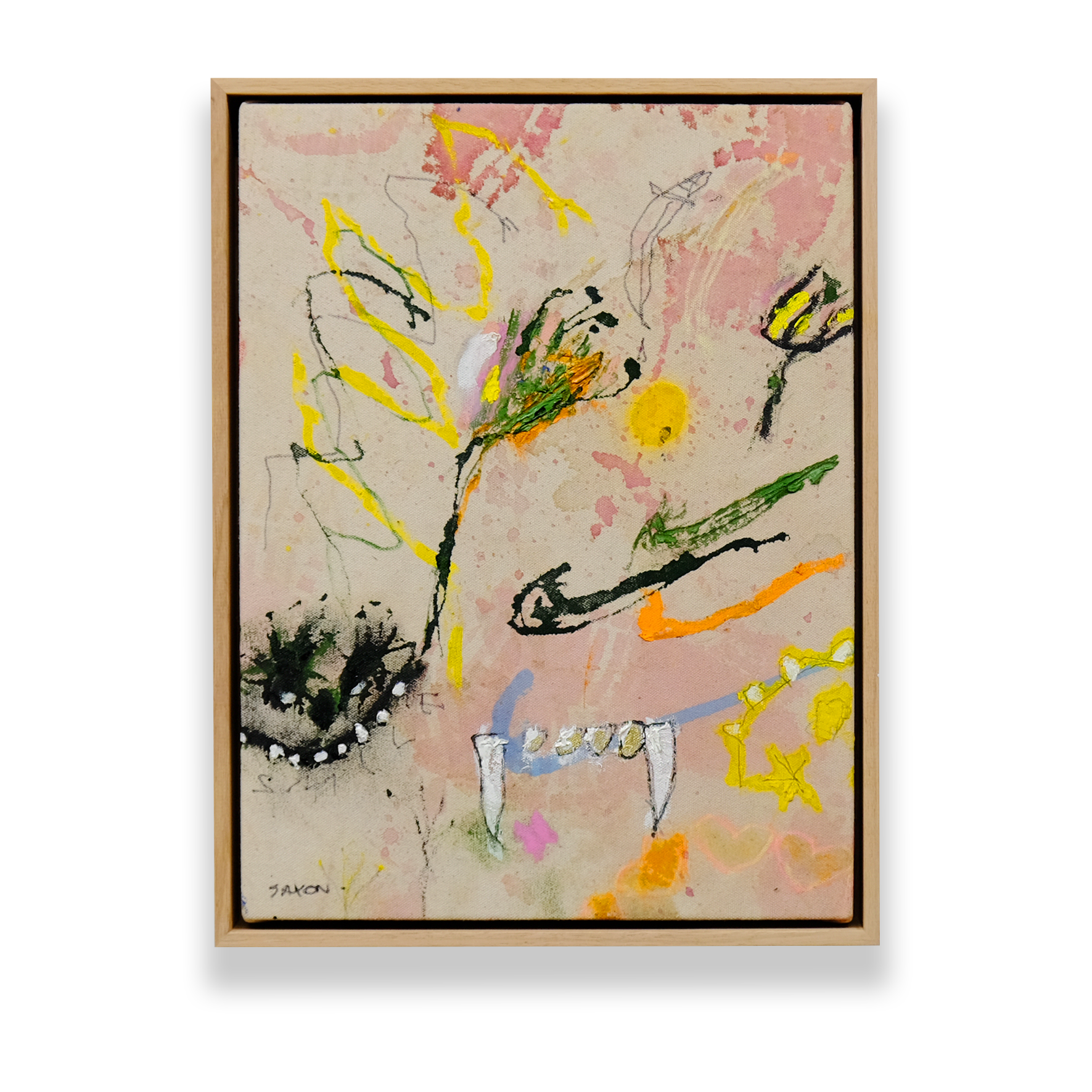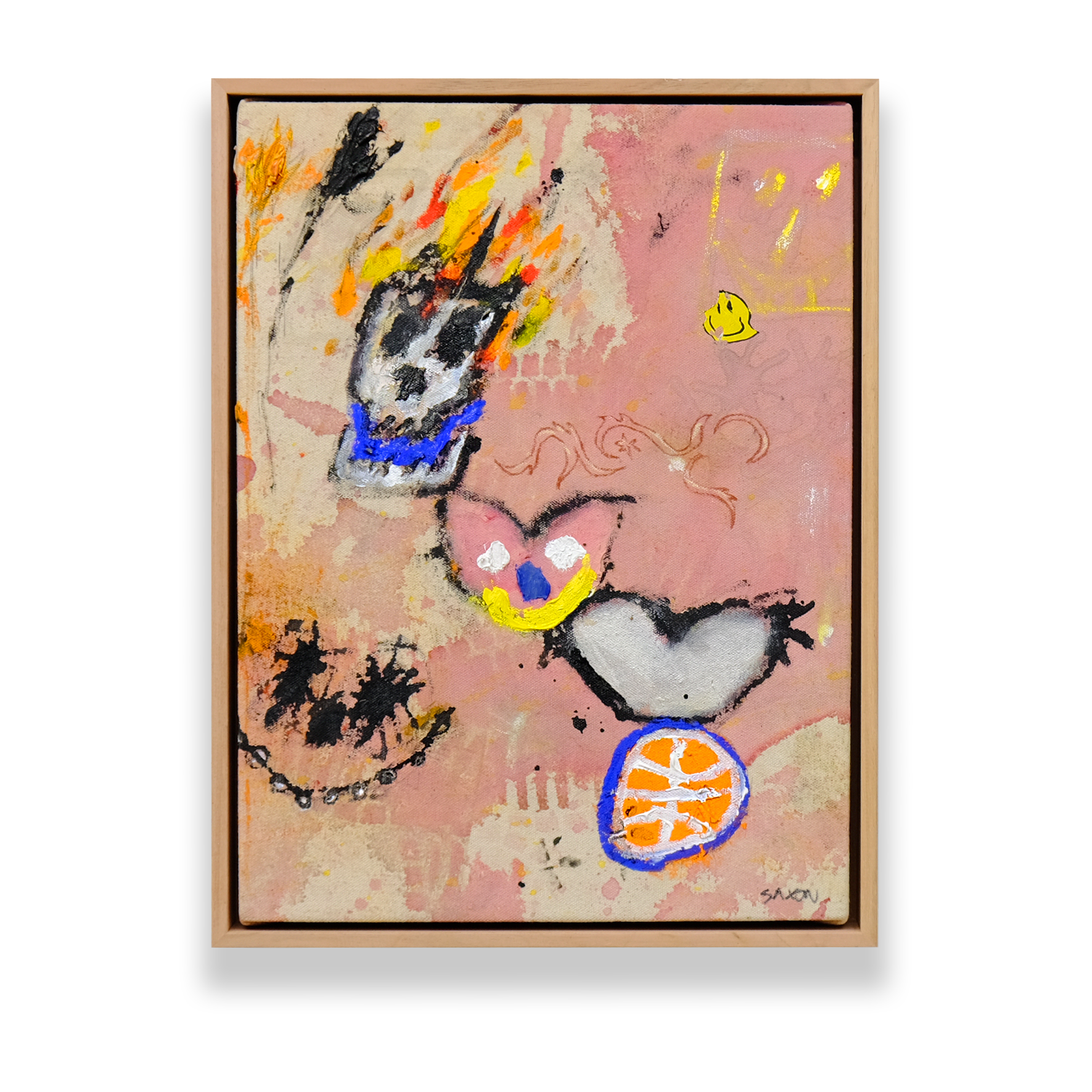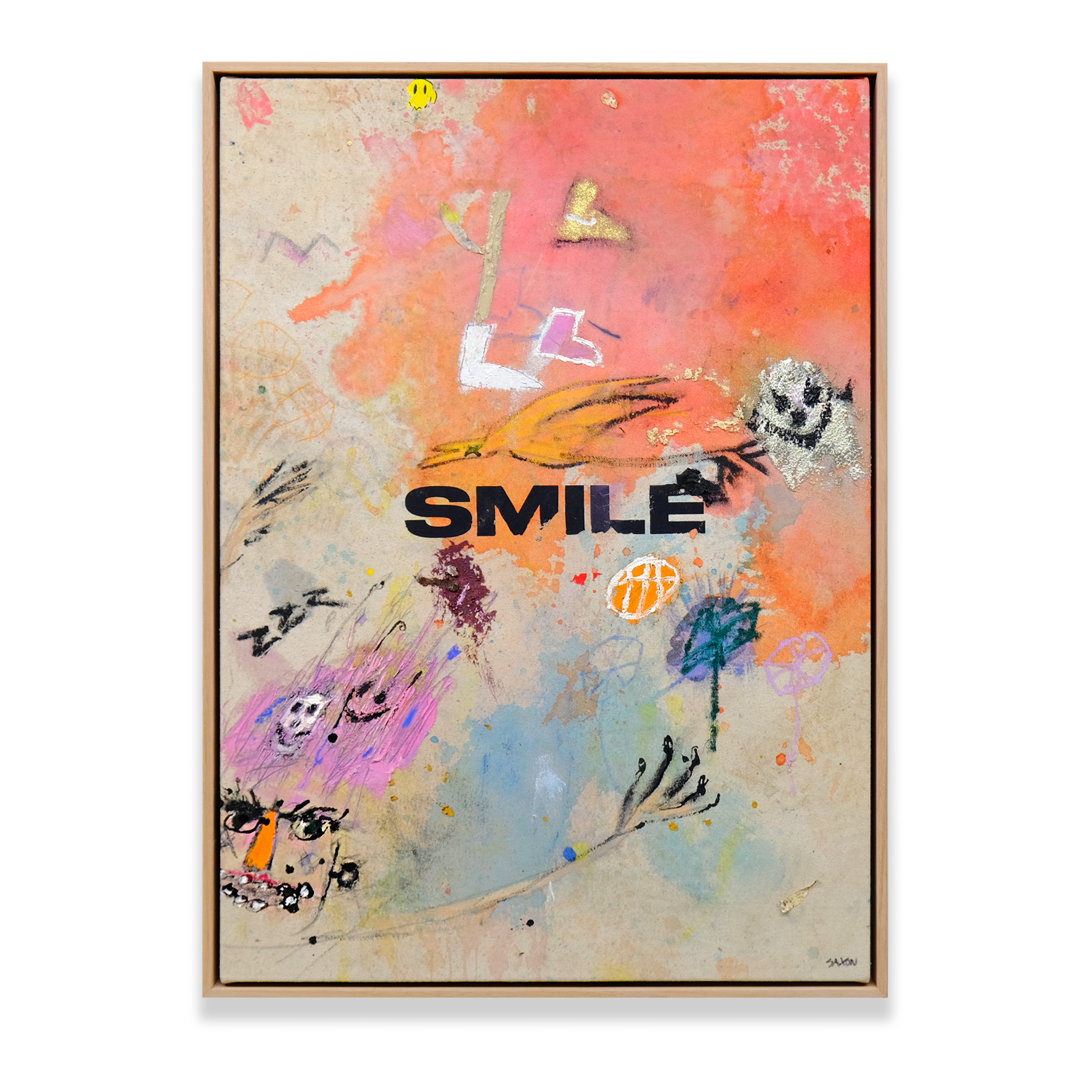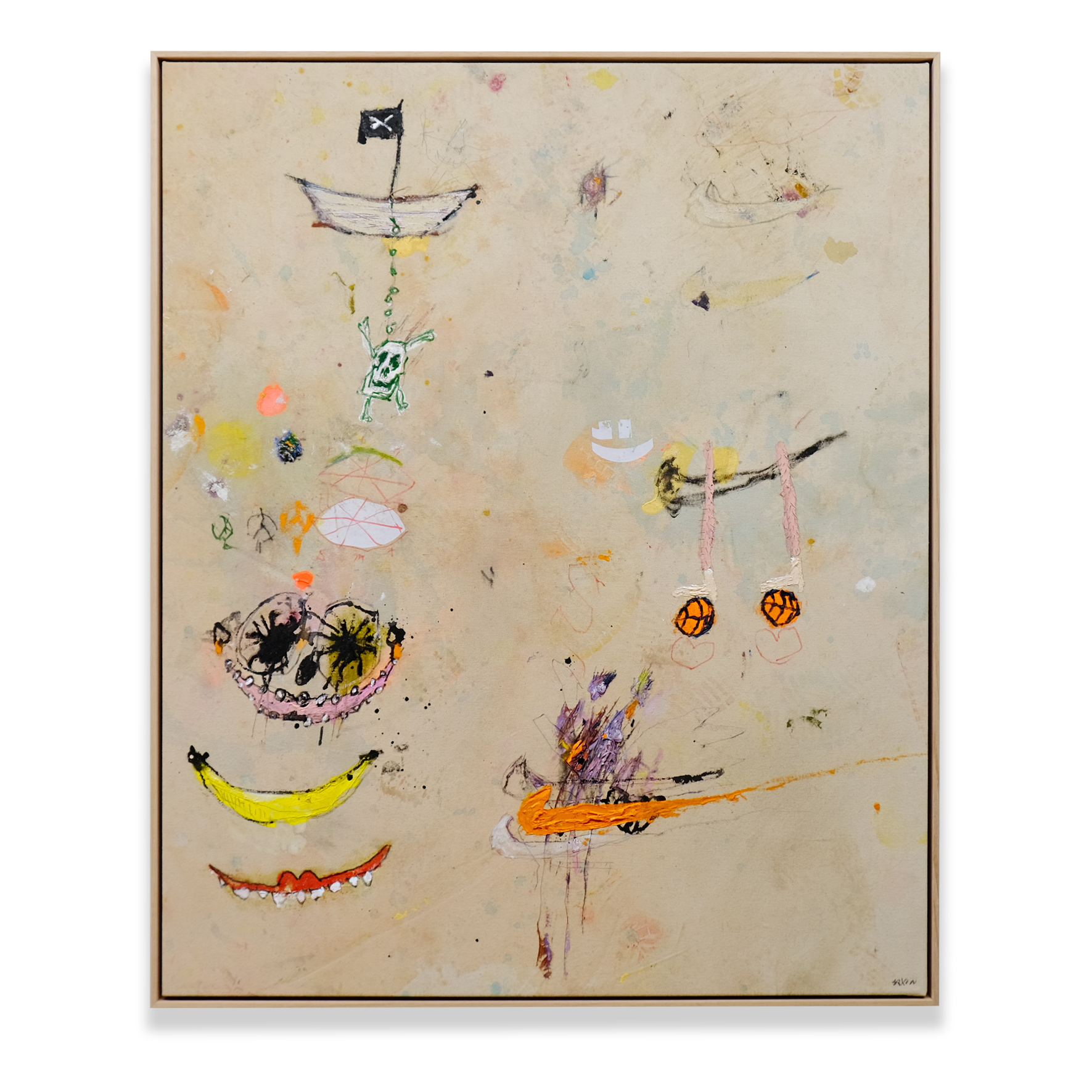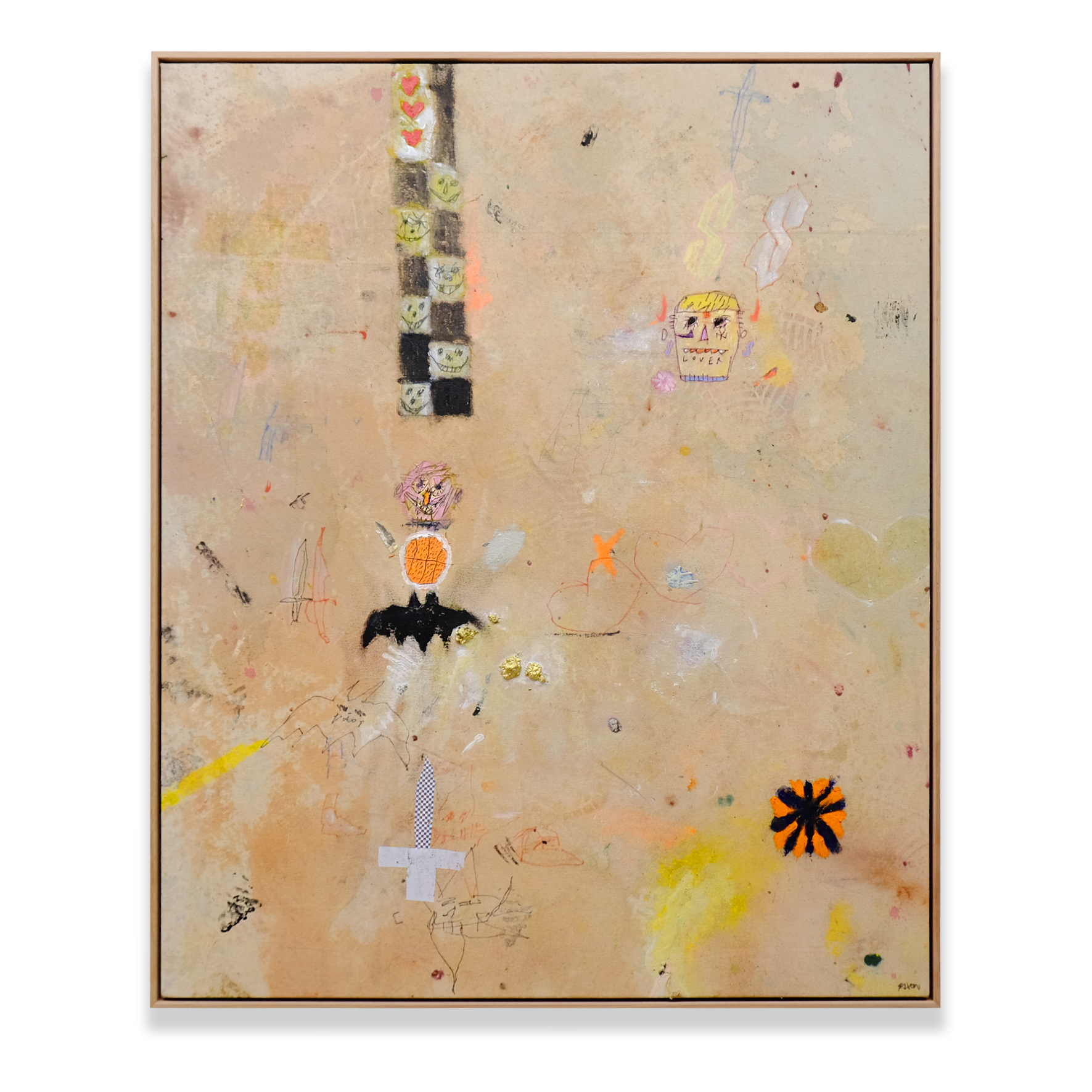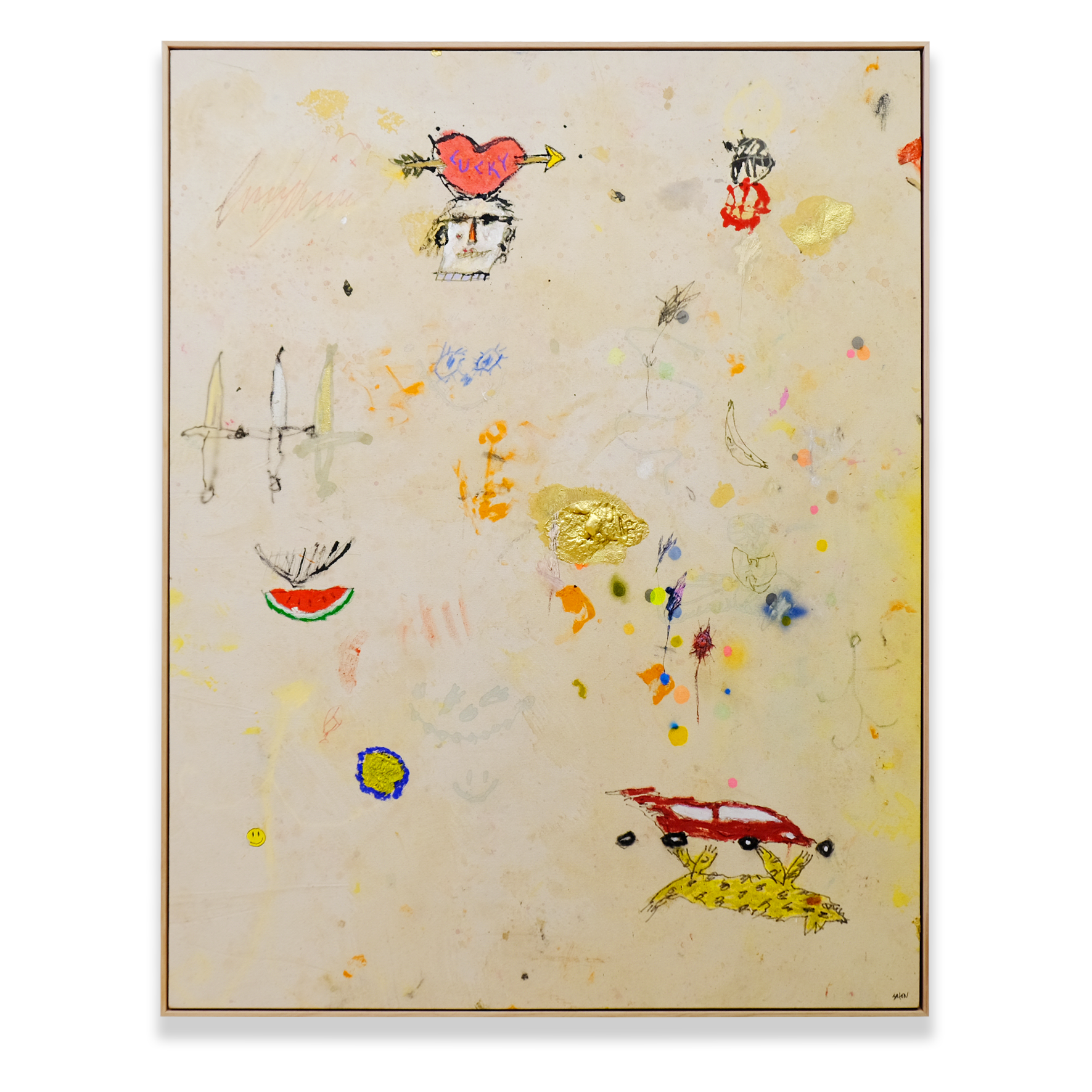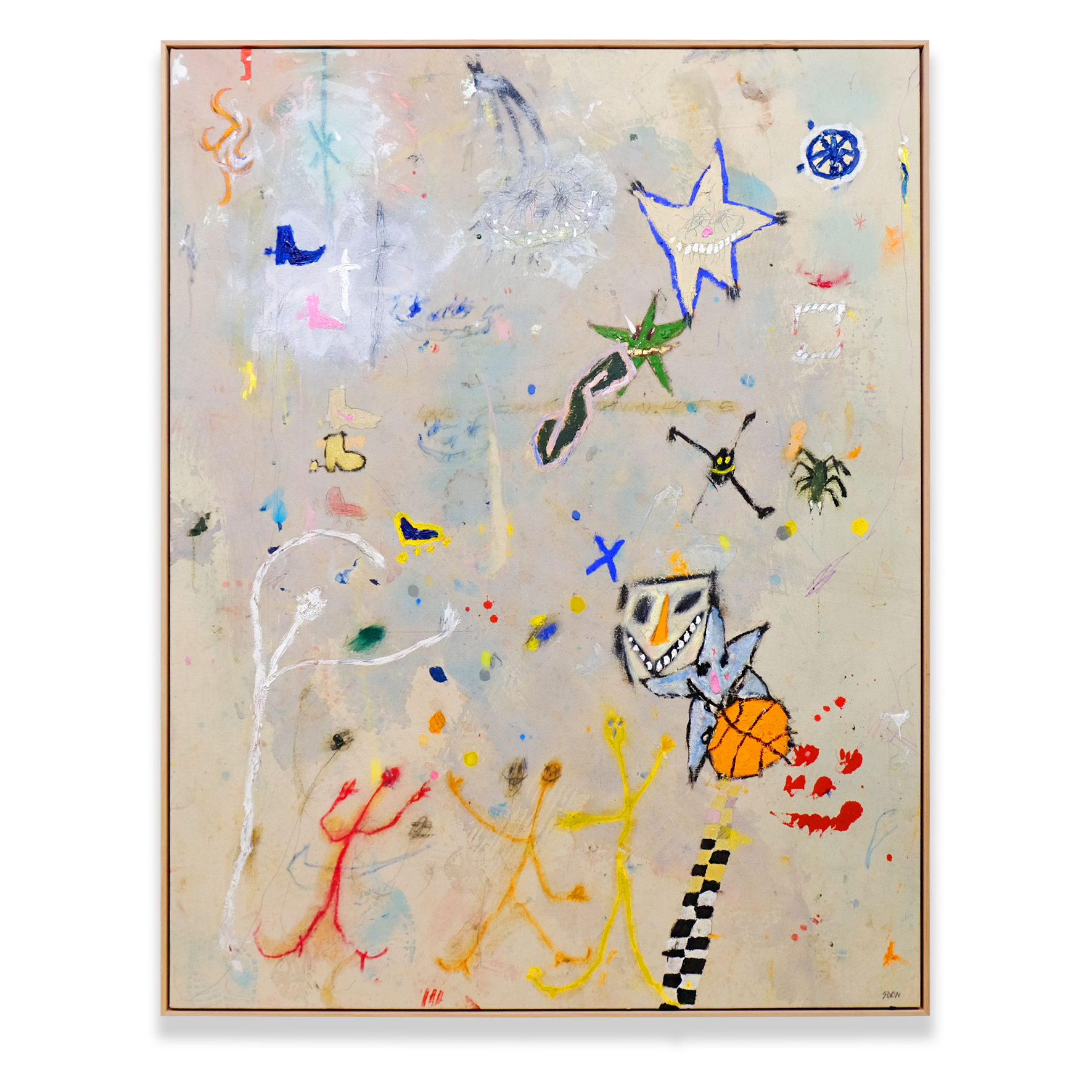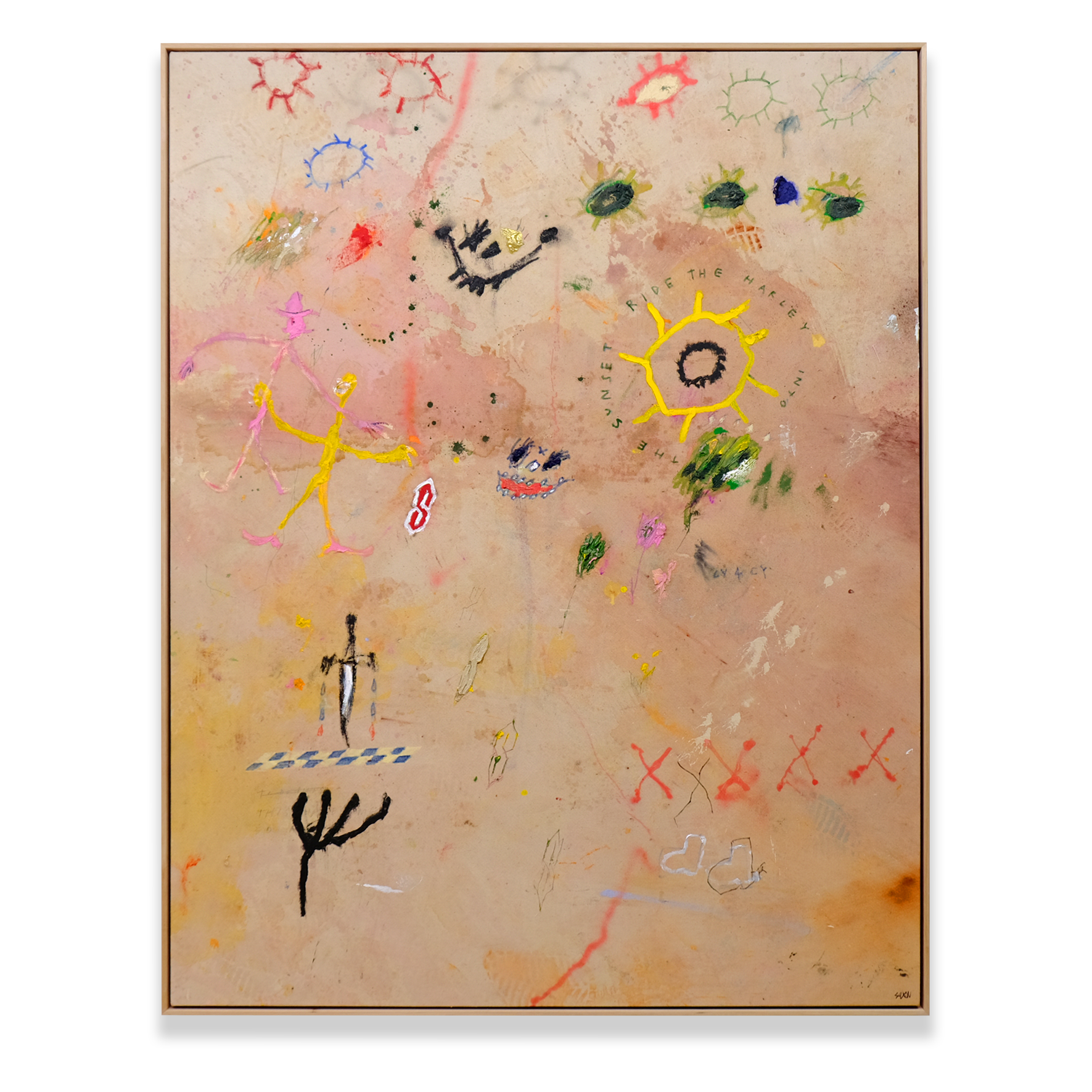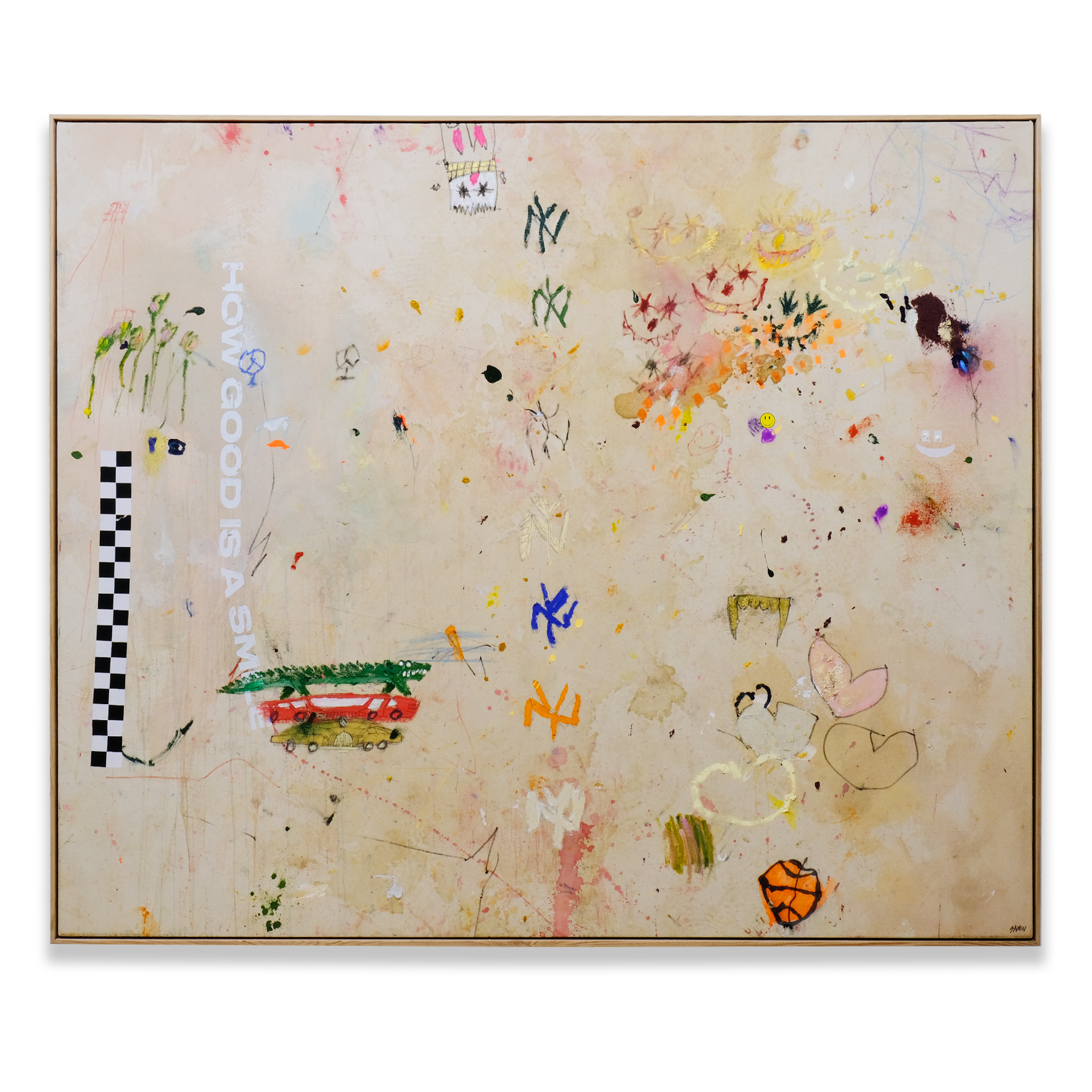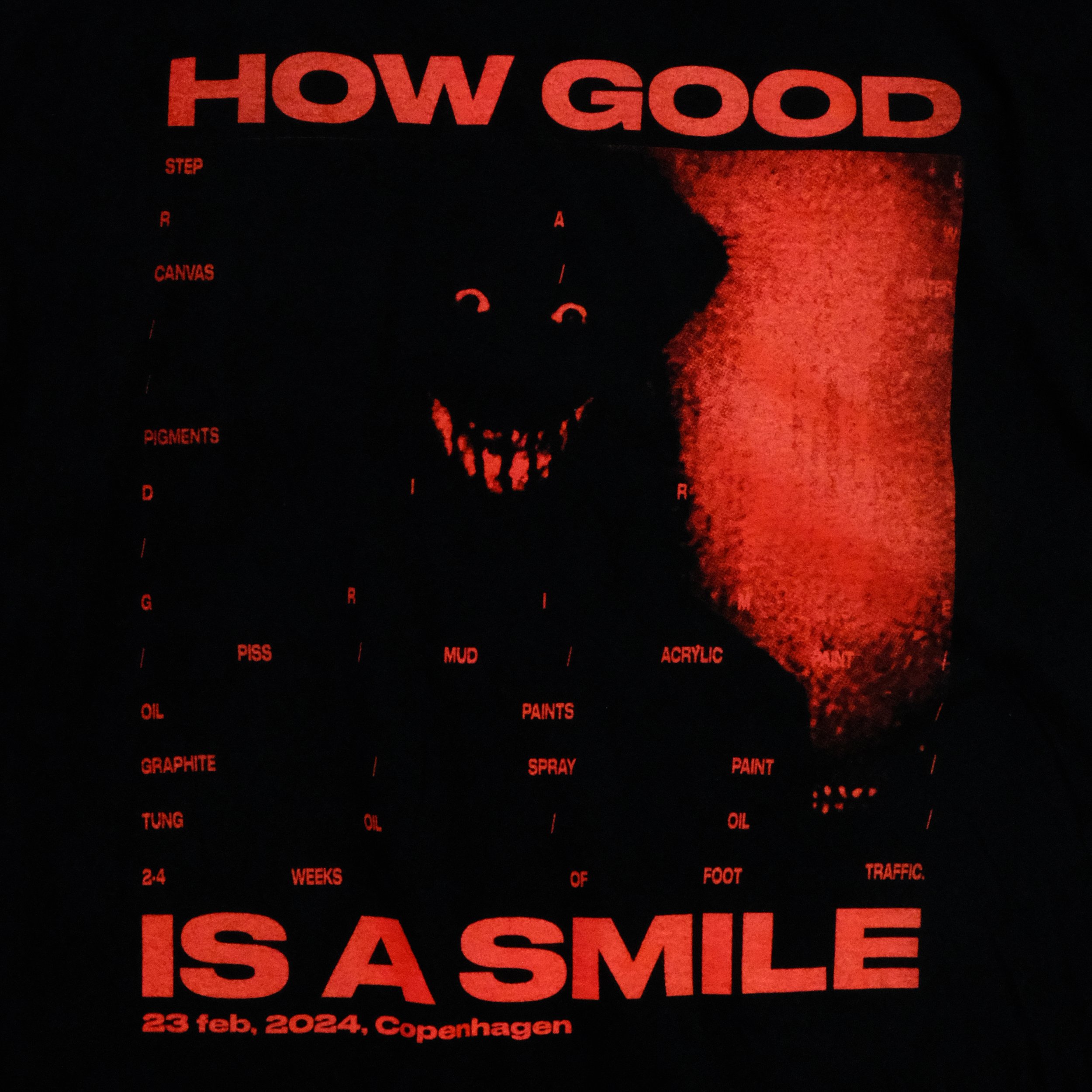Gallery Chrisoffer Egelund presents
How Good is a Smile.
23 Feb - 22 Mar, 2024
LOCATION: Bredgade 75 DK-1260 Copenhagen K
EMAIL: Info@christofferegelund.dk
PHONE: +4533939290
Catalogue of works
If you’re interested in purchasing a piece from my upcoming solo exhibition, visit the Christoffer Egelund website via the link below.
Alternatively contact the gallery via Info@christofferegelund.dk


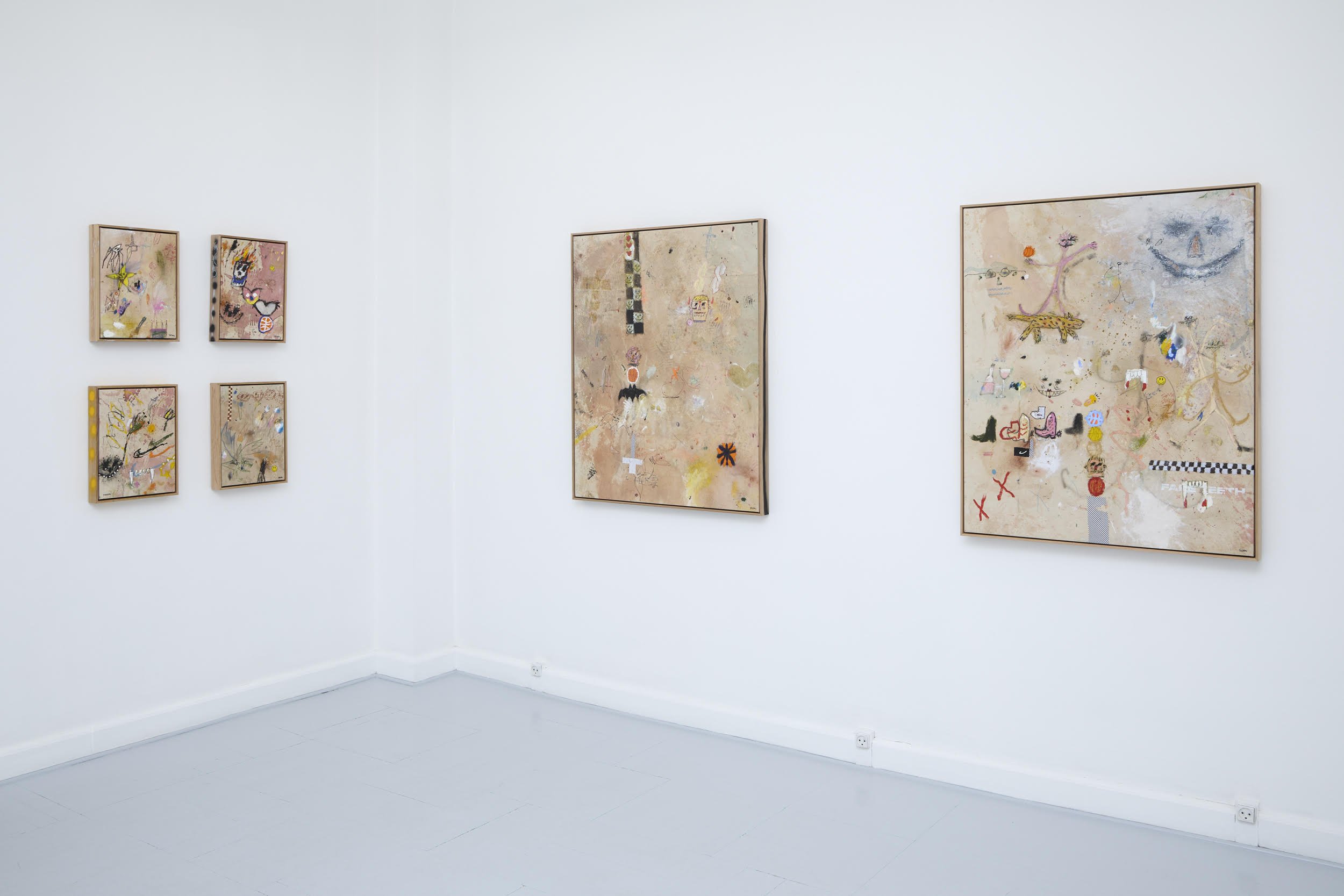



With no pretenses, How Good is a Smile is an optimistic, staccato body of work. Having worked through insecurities in past shows, Quinn’s debut European solo show How Good is a Smile is an exhibition that speaks with a quiet and optimistic confidence. Set amongst a sea of peach, salmon and oatmeal hues Quinn’s artillery of characters diverge into conversation. A totem of faces flies towards a row of spindly flowers, its trajectory intersected by a spider web of pencil, connecting the eye to a red car speeding through the fog, emblazoned with the Nike swoosh. Like an absurd dream, the viewer is encouraged to make their own connections, linking characters with titles, redaction with the figurative and the past with the current.
How Good is a Smile. For Saxon JJ Quinn, this is a statement not a question.
Operating with a style forged over time, How Good is a Smile announces itself with a clarity that only comes from consistent refining and reworking. Bold figures dance alongside spidery childlike illustrations. Streaks of white float like icebergs on the roughened canvases, redacting portions of the work from the viewer and forming a multifaceted timeline or presence and thoughtfulness. And yet, the paintings do not feel overworked. When questioned on the origins of the title, Quinn explained:
“An authentic smile can be so hard at times, yet simple and easy at others. They can mean nothing and yet mean everything. When real, they can be powerful, warming, calming, reassuring, loving, joyful and healing.”
How Good is a Smile is the clarification of Quinn’s practice, one which shy’s away from perceived notions of coolness and returns to the healing power of a smile.
Words by Lily Beamish
Catalogue of works
If you’re interested in purchasing a piece from my upcoming solo exhibition, visit the Christoffer Egelund website via the link below.
Alternatively contact the gallery via Info@christofferegelund.dk




Saxon Quinn’s paintings astonish the viewer with their innovative combination of the abstract and the figurative, the quiet and the bold. These are paintings that grapple with the complicated heritage ofModernism. They are reminiscent of some of the very first forays into abstract art by artists like Joan Miró and Vasilij Kandinsky with their bright primary colors popping off a neutral background, yet they also include inspirations from 1950s and 1960s High Modernism such as the rough textures of Jackson Pollock and Antoni Tápiez. Like the works of these pioneers of abstract art, Saxon Quinn’s paintings are carefully balanced, with great attention to the graphical composition of the elements on the picture plane.
The sometimes-childlike lines and symbols like stars, rainbows and kites brings to mind a famous quote by one of the primary trailblazers of abstract art, Picasso: “It took me four years to paint like Raphael, but a lifetime to paint like a child.” But it doesn’t take long to notice that Saxon’s works are not just the formal experiments of Modernism. Symbols of consumerism like the famous Nike checkmark and references to street culture mix with the Modernist brushstrokes. Fast cars, racing flags, basketballs, fashionable shoes and laughing faces intermingle. Are they laughing because they are having a good time or are they laughing menacingly? At the core of the Modernist world view is the unrelenting search for a pure formal art of graphical two-dimensional visuality that existed in a realm apart from the dreariness of everyday life and the physical world. But over time, this at the time avant-garde artistic expression has fostered some of the most expensive paintings sold, and thus, it has become a part of the capitalistic circulation of status symbols – just like the newest Nike designer sneakers and the cars we dream about. Thus, Saxon Quinn presents us with the aspirational idealism that often characterizes an artistic idea when it is first conceived and juxtaposes it with the symbol for the symbol’s sake that it is in danger of becoming. Another remarkable feature of Saxon’s works is his way of continuing the painting onto the frame. In previous centuries, the frame was an elaborate work of art in itself, one that you proudly let accent your priced possession in order to underline its worth. But over the course of the 20 th century, the frame disappeared – the grand work of art was to be experienced in a pure, self-contained form, free from outside distractions. Even though his art is reminiscent of the art of the 20 th century, Saxon Quinn breaks the tradition of the self-contained work of art, instead letting the work overflow and continue onto the frame. Instead of something that is closed off to the world, the work and its abundant energy become something that cannot be contained.
Saxon Quinn (b. 1986 in Victoria, Australia) is one of his country’s most promising up and coming young artists. He has exhibited at galleries in across the world in cities like New York, Los Angeles, Melbourne, Sydney, Berlin, London and Copenhagen and has participated in art fairs in Sydney, Seoul, Taiwan and Madrid.
Words by Christoffer Egelund Gallery
How Good is a Smile, Tee
Along side the launch of my solo exhibition, I will be launching an exhibition tee, available for the duration of the exhibition 23 February - 23 March.
This tee will be available via the shop page of my site from the 23rd AEST.





